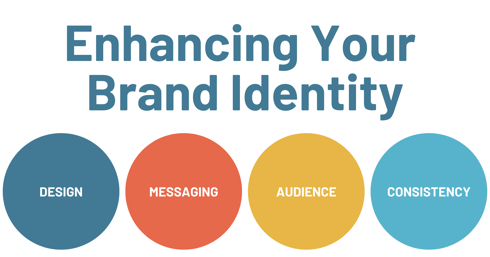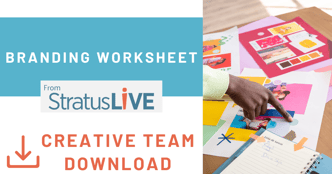
By now, most nonprofits have taken the necessary steps towards establishing their brand. Let's take a moment to revisit what a brand truly encompasses. A brand is not limited to just a logo or a set of colors; it is an entity that fosters immediate visual recognition. Your brand is what sets you apart from others. Therefore, it is crucial to periodically assess and ensure that your organization remains strong and conveys a consistent message across all channels.
At the heart of every remarkable brand lie four key components: design, messaging, audience, and consistency. You are likely familiar with these elements as you may have undergone a significant brand design process in the past 5-10 years. However, you might also be feeling frustrated because it seems that all the effort put into the design process is no longer reflected throughout the organization. Let's pause for a moment and explore ways to perform a check-in to assess the overall health of your brand today.
Design
When it comes to design, it's important to remember that it goes beyond just your logo and main colors. Design encompasses the overall look and feel of your organization. A complete design workup includes elements such as fonts, imagery, a full color scheme, and designated icons. Each of these elements plays a significant role in shaping your brand identity.
Fonts, for example, have their own personality and can greatly influence how your audience perceives your brand. A bold and modern font may convey a sense of innovation and forward-thinking, while a more traditional serif font may evoke a feeling of trust and reliability. It's essential to choose fonts that not only align with your organization's voice but also resonate with your target audience.
Imagery is another crucial aspect of design. The visuals you use, whether it's photographs, illustrations, or graphics, should reflect your brand's values and messaging. High-quality and relevant imagery can help create an emotional connection with your audience and enhance the overall impact of your brand.
A full color scheme is also an important part of design. Colors have the power to evoke certain emotions and associations, so it's crucial to choose a palette that aligns with your brand's personality and resonates with your target audience. Whether you opt for vibrant and energetic hues or more muted and calming tones, consistency in your color choices will help strengthen your brand recognition.
Lastly, designated icons can add an extra layer of visual appeal and functionality to your design. Icons can represent different aspects of your organization or serve as visual cues for navigation and user experience. Choosing icons that are unique, recognizable, and consistent with your brand's overall aesthetic will further enhance your brand's visual identity.
By carefully considering and enforcing these design elements, you can ensure that your brand not only looks visually appealing but also effectively communicates your organization's values and messaging to your target audience.
Messaging
Your organization likely has a style of messaging that you prefer to keep. Depending on the nature of the organization, some may take on a lighthearted kid-friendly approach, others may be more serious, and others might be witty. The way you communicate with the world around you gives life to your brand and also associates a distinct personality with it. It’s crucial to remember this when crafting messaging through emails, donation pages, ads, and other communication channels.
In an ideal scenario, the way your organization presents itself will attract the exact kind of people you are looking for as donors. This means that your messaging should be tailored to resonate with your target audience. For example, if your nonprofit focuses on children's education, a lighthearted and playful tone might be more effective in capturing the attention and support of parents and caregivers. On the other hand, if your organization addresses social justice issues, a serious and impactful messaging style may be more appropriate to engage activists and advocates.
The tone and voice of your messaging should align with your brand's overall values and mission. Consistency in your messaging will help build trust and credibility with your audience, as they will come to recognize and connect with your organization's unique voice. It's important to maintain this consistency across all communication platforms, whether it be social media posts, giving page content, or direct mail campaigns.
Digging a little deeper, your messaging should always be tailored to suit the specific platform or medium you are using. The way you communicate through emails may differ from how you speak in donation pages or ads. For instance, emails provide a more personalized and direct channel to engage with donors, while donation pages require concise and persuasive messaging to encourage conversions. By slightly adapting your messaging style to each platform, you can effectively reach and resonate with your audience.
As we see, your organization's messaging style plays a crucial role in shaping your brand identity. It gives life to your brand, associates a personality with it, and attracts the kind of people you are seeking as donors.
Audience
The strategy behind your organization's voice cannot be created without considering who your target audience will be. Determining a target audience starts with some demographic research as understanding the demographics of your audience plays a crucial role in tailoring your messaging to a pinpointed persona.
Demographic research involves gathering information about the characteristics of your target audience, such as age, gender, location, income level, education level, and interests. This information will help you create a detailed profile of your ideal donor or supporter, which in turn will guide your marketing and communication efforts. This may seem like a costly and timely task, but actually most of this data can be gathered from your CRM. The data you already have is your greatest leg up in this process.
Once you have identified your target audience, you can then develop a strategy to effectively reach and engage with them. This may involve creating specific campaigns or initiatives that align with their interests and values. For example, if your target audience is young professionals interested in environmental issues, you may want to focus your messaging on sustainability and the impact of their support on the environment.
In addition to demographic research, it is also important to consider psychographic factors when determining your target audience. Psychographic factors include attitudes, values, interests, and lifestyles. This information can provide deeper insights into the motivations and preferences of your audience, allowing you to even better segment your messaging.
Understanding your target audience can even help you identify new opportunities for growth and expansion, ultimately strengthening your brand and attracting the support you need.
Consistency
After you have gone through the process of developing your brand identity, it is important to package everything up into an official brand guidelines kit that can easily be referenced by your entire organization. An easily accessed brand guidelines kit is the key to brand consistency. If you do not have an official document displaying your brand guidelines, this is your opportunity to create one. This document should provide a clear set of rules and guidelines for your team to follow when creating content or designing materials, ensuring that your brand is portrayed accurately and effectively at all times.
If you currently do not have official brand guidelines, it is highly recommended to create them and require your team to adhere to them. Brand guidelines serve as a roadmap for your team, providing them with clear direction and guidance on how to represent your brand. By establishing and enforcing brand guidelines, you can create a consistent brand identity across all touchpoints, ensuring that your audience recognizes and connects with your brand everywhere. For example, if your audience finds your website and clicks your "give now" button, what will they see on their giving page? Any page that can be customized to fit your brand should be. StratusLIVE Ignite is built with this in mind, allowing organizations to setup all of their templates and engagement pages with their brand specs from the start.
When creating or reevaluating your organization's brand guidelines, consider the elements you will need to display, such as logo usage, color palette, typography, and imagery style. Doing so will create a cohesive and recognizable brand identity that resonates with your audience.
Here is a sample of a simple one-page brand guideline:
.png?width=326&height=550&name=Artist%20Impact%20(1).png)
As previously stated, brand guidelines should serve as a reference tool for your entire organization, ensuring that everyone understands and adheres to your brand's standards. It provides clarity and consistency, preventing any confusion or misinterpretation of your brand's public persona. When all team members are aligned with your brand guidelines, they can confidently create content and materials that accurately represent your brand, enhancing its overall impact and recognition.
Ensuring your organization is still considering these four key elements of your brand is essential for a clear, cohesive public presence. StratusLIVE is happy to have a conversation about how exactly we can leverage our Nonprofit Industry Cloud to further enhance your brand presence. Reach out to us anytime to chat.
StratusLIVE is built to ensure you are leveraging data and tools to maintain a cohesive brand experience. If you are looking for more ways to strengthen your brand, start here.







